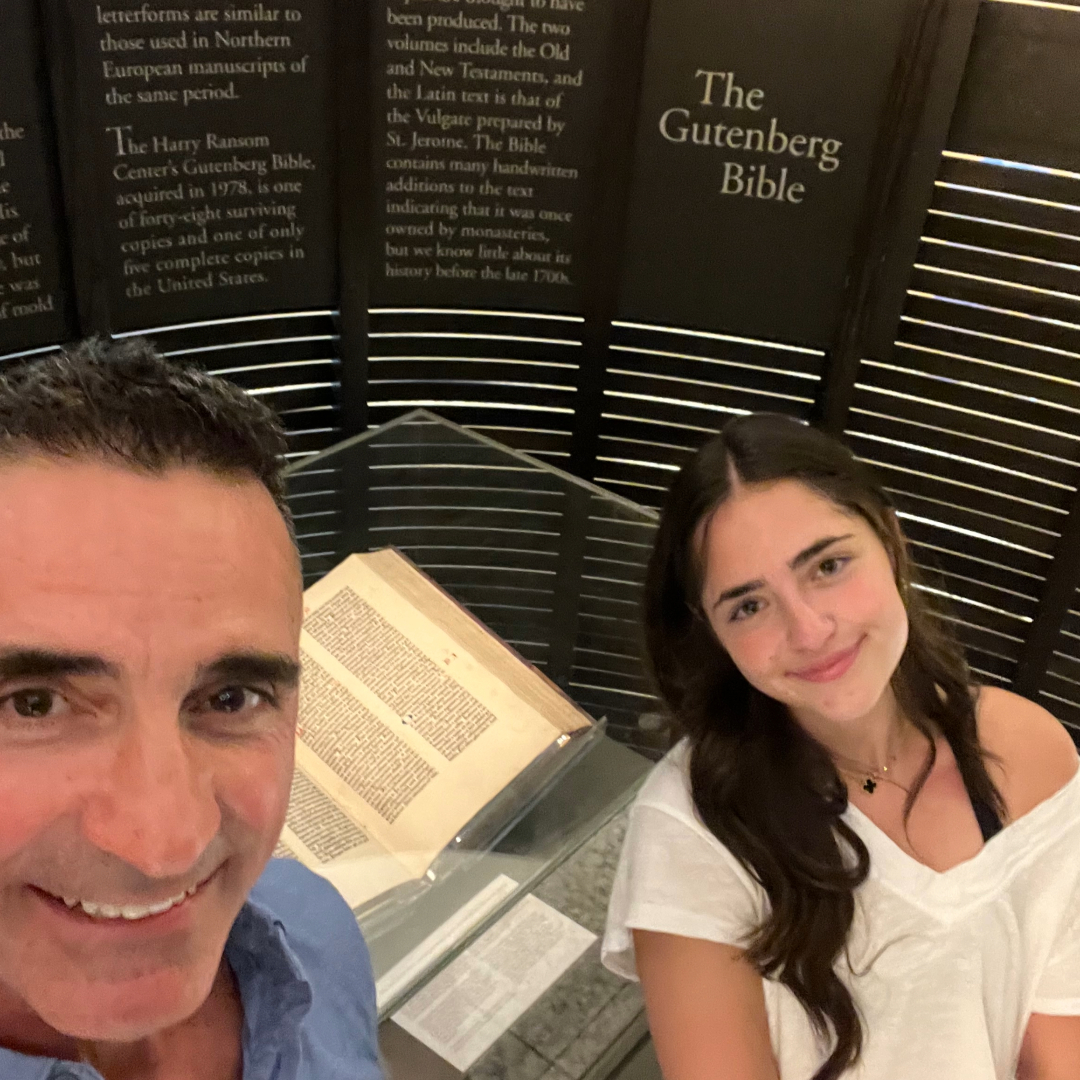As I embarked on a journey to explore this fascinating history of printing, my inspiration came from an unexpected source – my daughter Jacqueline, who had just started her academic journey at the University of Texas. This journey led me to the Harry Ransom Center, where I had the privilege to witness the awe-inspiring Gutenberg Bible, a cornerstone of printing history. In this blog post, we’ll delve into the evolution of printing, the significance of the Gutenberg Bible, and how my daughter’s educational pursuits ignited a deep curiosity within me.
The Evolution of Printing
The history of printing begins long before the Gutenberg press made its mark. Ancient civilizations employed various techniques to reproduce text and images. From the Chinese invention of woodblock printing in the 9th century to the use of movable clay type in Korea during the 13th century, humanity had been inching towards the revolutionary concept of mass communication.
However, it was Johannes Gutenberg’s invention of the movable-type printing press around 1440 that forever changed the course of history. Gutenberg’s press allowed individual characters to be arranged and rearranged for printing, enabling the rapid reproduction of books and documents. This innovation marked the birth of the printing revolution, triggering an explosion of ideas, knowledge, and cultural exchange across Europe.
The Gutenberg Bible: A Symbol of Innovation
Central to the printing revolution is the Gutenberg Bible, also known as the 42-line Bible due to its format. Printed in Mainz, Germany, around 1455, this Bible is often regarded as one of the earliest major books printed using movable type. The craftsmanship, attention to detail, and sheer historical significance of the Gutenberg Bible make it an iconic artifact that bridges the gap between the medieval manuscript culture and the modern printed era.
Visiting the Harry Ransom Center
My journey into the history of printing found a focal point at the Harry Ransom Center, a renowned cultural archive and research library located at the University of Texas at Austin. The center boasts an extensive collection of literary, artistic, and cultural artifacts, including a rare copy of the Gutenberg Bible.
Stepping into the center’s hallowed halls, I felt a palpable connection to the past. The Gutenberg Bible, encased in protective glass, is one of only 20 intact copies that are left in the world and was purchased in 1978 for $2,400,000. It stands as a testament to the relentless pursuit of knowledge and the remarkable advances that shaped our modern world. The meticulous craftsmanship of each page, the elegance of the typeface, and the aura of historical significance created an overwhelming sense of reverence.
Inspiration Ignited by Education
As my daughter began her studies at the University of Texas, her enthusiasm for learning and exploration became infectious. Her experiences, stories of professors, and the vibrant academic environment inspired me to delve deeper into subjects I had long been curious about. The Gutenberg Bible, a touchstone of human achievement, beckoned me to explore the annals of printing history and witness firsthand the monumental transformation it brought about.
In that quiet room of the Harry Ransom Center, as I stood in the presence of the Gutenberg Bible, I couldn’t help but reflect on the journey of human progress. The dedication of countless scholars, inventors, and thinkers culminated in this moment—a moment that wouldn’t have been possible without the innovative spirit that thrives in academic institutions like the University of Texas.
Conclusion
The history of printing is a tapestry woven with threads of creativity, curiosity, and the indomitable human spirit. From the early methods of reproduction to the revolutionary impact of Gutenberg’s press, each chapter in this story marks a significant stride towards the democratization of knowledge.
My daughter’s educational journey at the University of Texas served as the catalyst for my exploration into this rich history. The visit to the Harry Ransom Center and the encounter with the Gutenberg Bible reminded me that education is a perpetual flame, illuminating the path from our past to an inspired future. Just as Gutenberg’s invention ignited an explosion of knowledge, my daughter’s academic pursuits ignited a spark within me, propelling me to discover the treasures of our collective past and share them with the world.


